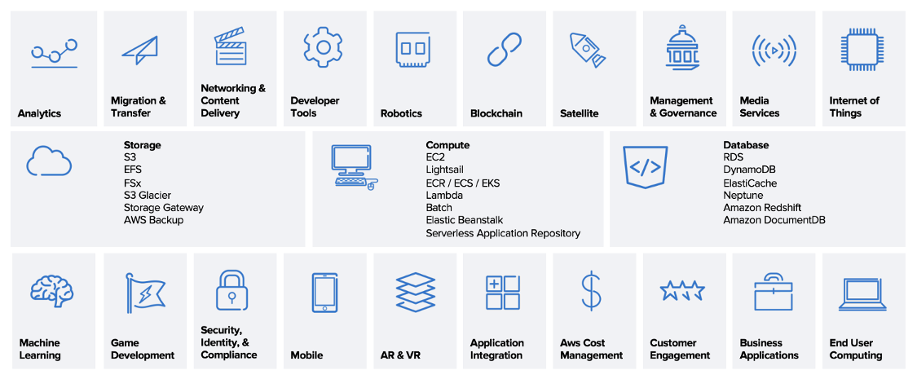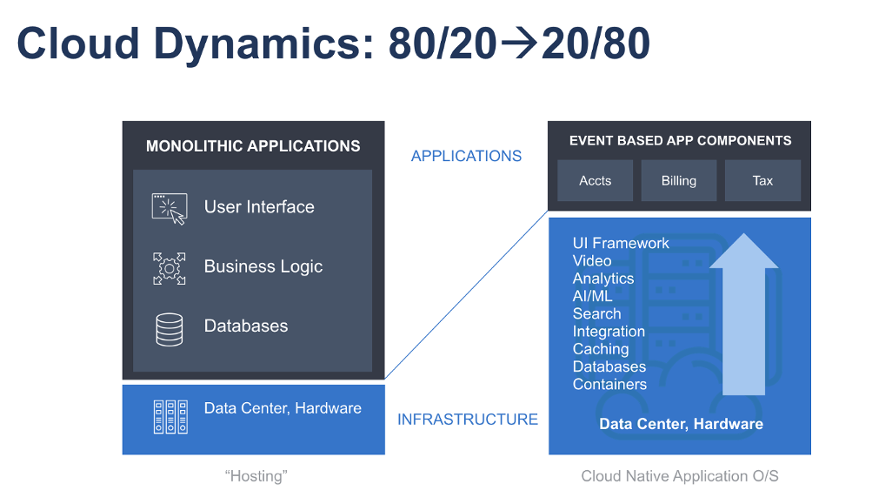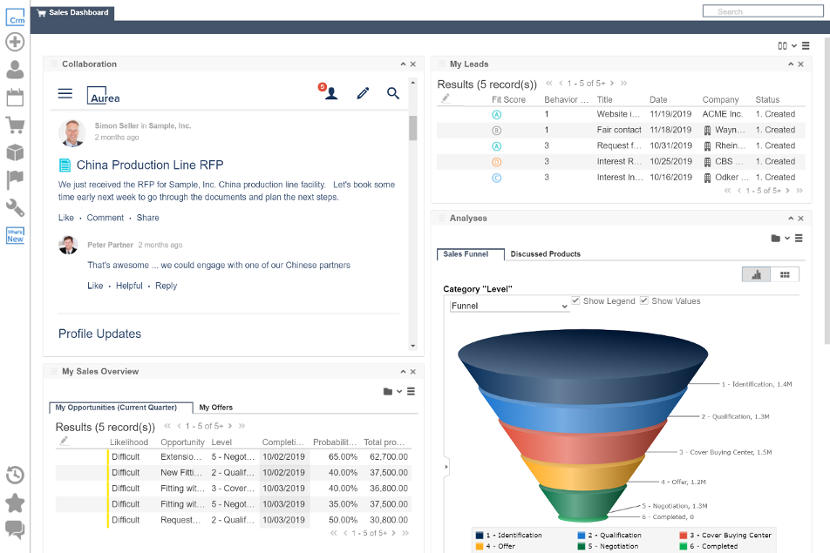2019 Annual Report
Aurea Customers,
2019 was, in many ways, the most consequential year in our company’s history. Let me start by sharing just a few highlights:
We added four new acquisitions, further building out our collaboration and sales and marketing portfolios:
- Bonzai – Sharepoint-based Intranet solution
- Skyvera – Sharepoint-based collaboration widgets
- Infer – AI powered lead scoring for sales and marketing
- FirstRain – Sales intelligence and prospect insight for sales teams
We welcomed over 150 new customers and, most recently, a leading Children’s Research Hospital with whom we’re incredibly excited to partner. Together, we’re creating a global physician and research collaboration platform to dramatically improve childhood cancer survival rates in developing countries. We couldn’t be more proud of the work our customers do with our products.
We expanded our Unlimited library of product pairings and now have nearly 20% of our customers using a second, third, or even fourth Aurea product. And finally, we completed 100% of our Jive Cloud and Hosted migrations to AWS.
We also had our share of challenges – some of our Jive customers struggled with quality issues earlier in the year as we executed the migration. There is also a prevailing sense with some of our customers that not much is happening on the innovation front – a perception which is justified. In this post, I hope to explain what we’ve been up to, and help you understand why I believe this year is so consequential for us and for you.
A New Vision
In 2019, we dove headlong into executing our new vision for the company. We’ve shared elements of this vision over the last couple years, and the purpose of this note is to pull all those pieces together so you have a complete view of what we’re trying to do and why.
There are two critical elements of this vision for Aurea, both of which are designed to deliver big impact and far greater value for you:
1) Our “Netflix of Business Software” business model
2) Our AWS-powered native cloud technology strategy
I’d like to share a bit about both, and how they work together.
Element #1: Netflix of Business Software
Beginning in 2018 with Prime (ironically, borrowed from Amazon) and then becoming the core of our brand with Aurea Unlimited in 2019, the “Netflix of Software” business model is how our acquisitions bring differentiated value to you. Quite simply, we brought the Netflix model – where customers pay a single subscription for access to all of Netflix’s content (original and acquired) – to business software.
In basic terms, every dollar of subscription you pay Aurea applies equally to every product in our portfolio. So if you license an Aurea product at $1M a year, you have $1M not just of the product you originally purchased, but also for each and every product in our portfolio. And with a library of over 50 products and growing, that means over $50M in software for that $1M subscription – a 98% discount. And as our library continues to grows – and we expect to double it every three years – your effective discount grows along with it.
And our product portfolio ambitions are vast – today we offer solutions for Sales (CRM and related sales intelligence products), Collaboration (Jive, Bonzai, and Skyvera), Marketing (campaign and list management), Operations (project planning & communications), ERP, and Infrastructure. Our goal is to build a library that spans every major product category within enterprise software so you always have a “Netflix” solution alternative.
Shaking Things Up
With this level of effective discounting, you can see how this model is so disruptive to our industry – and more importantly, how valuable it is to you. Enterprise software has historically lived and died on multi-product mega-deals with price tags of $100M and higher. Our Unlimited model gives you full access to our growing portfolio – at a cost of just 1-2% of that number. We see it as radically changing how you think about your digital transformation – accelerating initiatives to create competitive advantage that otherwise would have gone unfunded.
This year, we learned we also have to make it easier for you to take advantage of our Netflix model. Business software is not like movies – it can be expensive to deploy and really expensive to integrate. “Free” software is one thing, but as many of you have pointed out, there remains a cost to get the software live.
One of the downsides of acquiring software companies is they tend to be built on disparate technologies, many of which are outdated (what we call “technical debt”).
This creates two problems for us – how do we actually advance and innovate a product with legacy underlying technology, and how do we tie all these different products and technologies together so that you can readily take advantage of your “Netflix of Software” rights?
Element # 2: Public Cloud Native Technology Strategy
This drove our second major decision of 2019: to re-platform our product portfolio – both today’s and tomorrow’s – using a native public cloud architecture built on AWS.
The Technology Revolution that is the Public Cloud
Every decade or so, information technology undergoes a disruptive shift that has big implications for software companies like us and IT consumers like our customers. The move from mainframes to client/server to networked computing was one such shift, as was the move from DOS to Windows. In all of those cases, the technology shift drove big changes to the software running on those technology stacks.
We are in the midst of such a shift right now. In the legacy on-premise world, the application code represents the majority of the architecture stack with things like databases and compute power representing the remainder. In the new public cloud world, this ratio inverts. The application is a valuable, but relatively thin layer on top of the public cloud which is responsible for orchestrating all the various services and providing the value-added knowledge organization to link them together.
This is why we have been working feverishly to re-architect all of our products to run natively on the public cloud. It’s not a small task – for many products it amounts to a complete re-write, which is why 2019 saw little customer consumable features delivered across many products in the portfolio. But by doing so we enable a vastly faster pace of innovation and higher quality software. Why? Because with AWS providing a huge and ever-growing array of services we can leverage, we can devote our engineering resources to the value-added core that makes each product better. Amazon focuses on the non-core surround, we focus on the customer impacting value. Our return on engineering investment gets amplified 10x.
AWS Library

Most of our competitors, perhaps understandably, are not doing this. You will hear about lots of different flavors of “cloud” – private cloud, hybrid cloud, community cloud, and a litany of others. All of these represent a compromised, hybrid state in which the legacy on-premise architecture is simply being dropped on to the cloud platform. As such, it gets none of the engineering amplification benefits of using public cloud services, while adding all the complexity. It is our view, perhaps controversially, that for most customers this is a worse model than on-premise. It will yield lower quality software with no increase in engineering pace or innovation. In contrast, the native public cloud architecture unlocks all of those benefits – but it takes a tremendous amount of work (and customer patience) to cross the chasm.
From Applications to Solutions
The other element of our technology strategy, one that is also enabled by the public cloud, is to integrate all of our products with one another – as well as make it easy to integrate them with other third-party solutions like Salesforce, Workday, or ServiceNow. We do this via our new Cloud Integration Hub. The Cloud Integration Hub unlocks the power and utility of our ‘Netflix of Software’ model by making it simple for customers to assemble multi-product solutions. We have customers that have combined our CRM application with our Jive collaboration application to create collaborative CRM. Other customers have added our Infer lead scoring product to our marketing automation solution to create AI-driven marketing campaigns. These kinds of solutions will be easy and frictionless for you to deploy with our new technology strategy – same tech stack, same services, all integrated together via the Cloud Integration Hub.
Collaborative CRM
But we’re taking things one step further. For applications in our ‘Netflix of Software” library that are in large, mature markets – for example, CRM – we are building the data models of those applications to be 100% compatible with the market leader (in this CRM example, compatible with Salesforce). So not only can you integrate our applications with each other and with other third-party applications like Salesforce using the Cloud Integration Hub, you can easily move between those third-party applications and our “Netflix of Software” alternative without the expense and headache of re-mapping data schemas. Our goal is to give enterprises the ability to incorporate our Netflix library at whatever level they find valuable, without any of the “lock in” that is the confounding approach of most large enterprise suite vendors.
Aurea Vision
2019 to 2020: Realizing the AWS-Native “Netflix of Software” Vision
In 2019 we launched our new “Netflix of Software” business model and began re-platforming our software natively on AWS to both increase our pace of innovation and make it easier for you to adopt and integrate new products from the library. Now, in 2020, we can start shipping new innovations on top of this new platform. Our goal is for our business strategy (“Netflix of Software”) and technology strategy (native public cloud) to work harmoniously together to transform how you use technology – and drive competitive advantage for your business.
We look forward to sharing more throughout the year on what these changes mean for each of you and the products you use, so you can enjoy the fruits of increased innovation on the products you already use – and also take advantage of Unlimited to add great new capabilities and value with less friction and expense. Most importantly, we’re looking forward to shipping the innovations this new strategy makes possible – and rewarding your patience over the last couple of years.
We thank you for being loyal customers, and we look forward to incredible things together in the decade ahead.
Scott Brighton
Chief Executive Officer
Continue the conversation
Log in to Worx to comment on this blog.







